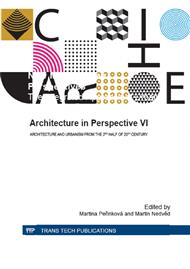p.132
p.137
p.141
p.147
p.153
p.158
p.164
p.171
p.176
Sustainable Landscape between Buildings
Abstract:
Currently, there is a tendency in architecture to search for solutions implementing the assumptions of the sustainable development paradigm. A number of them are components of architecture, which in the future will certainly affect urban planning and architecture to a much greater extent. An issue of great significance is the need to integrate sustainable system elements with the spatial structure of environmentally friendly architectural facilities and complexes in order to achieve harmony between the built and natural environment, which is a basis of sustainable development. In this article, the author would like to solve the problem of how to design buildings, housing estates and towns so that their impact on the environment will be acceptable, i.e. will not exceed the possibilities of natural environment regeneration.
Info:
Periodical:
Pages:
171-175
Citation:
Online since:
November 2014
Authors:
Permissions:
Share:
Citation:


